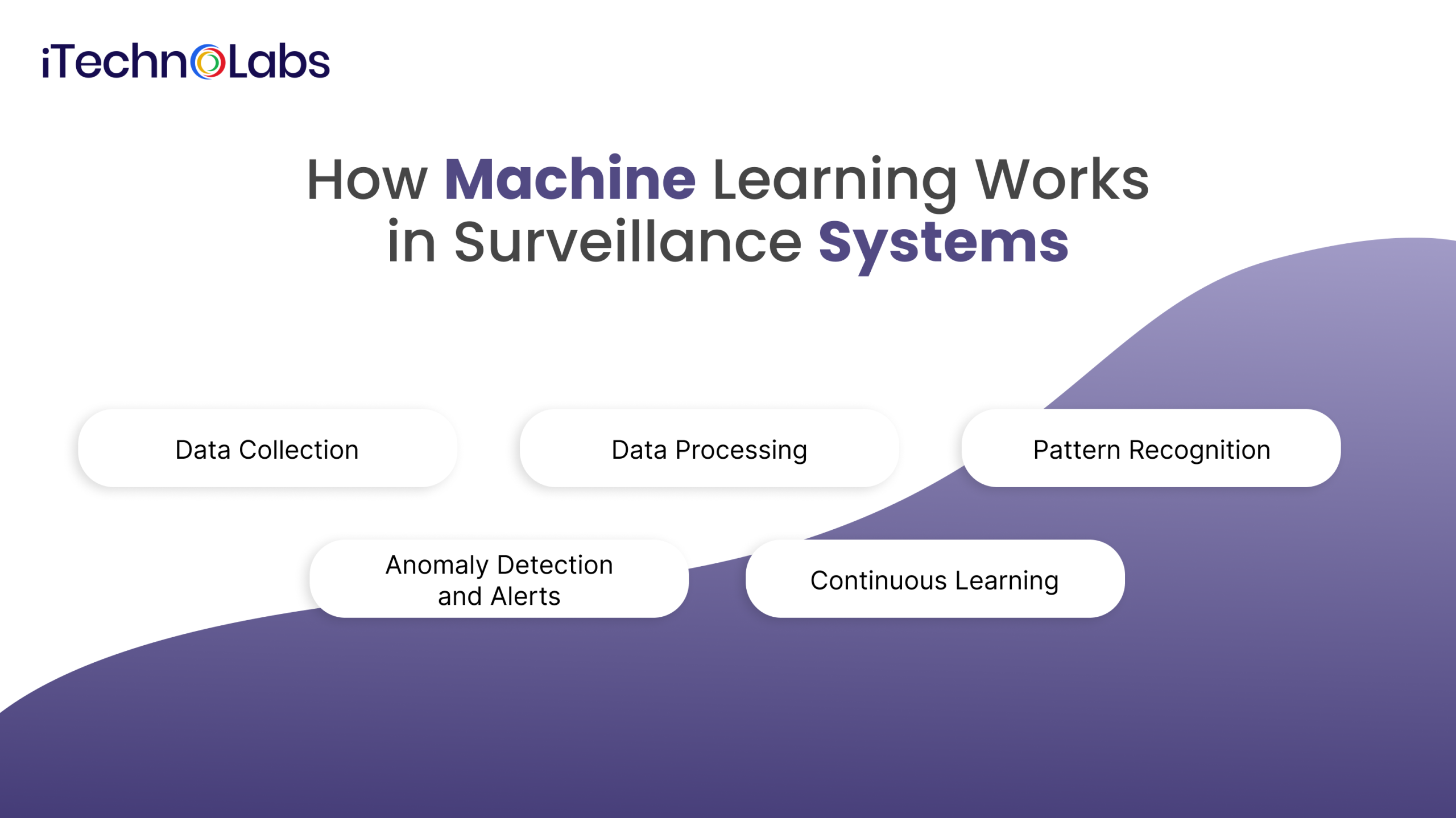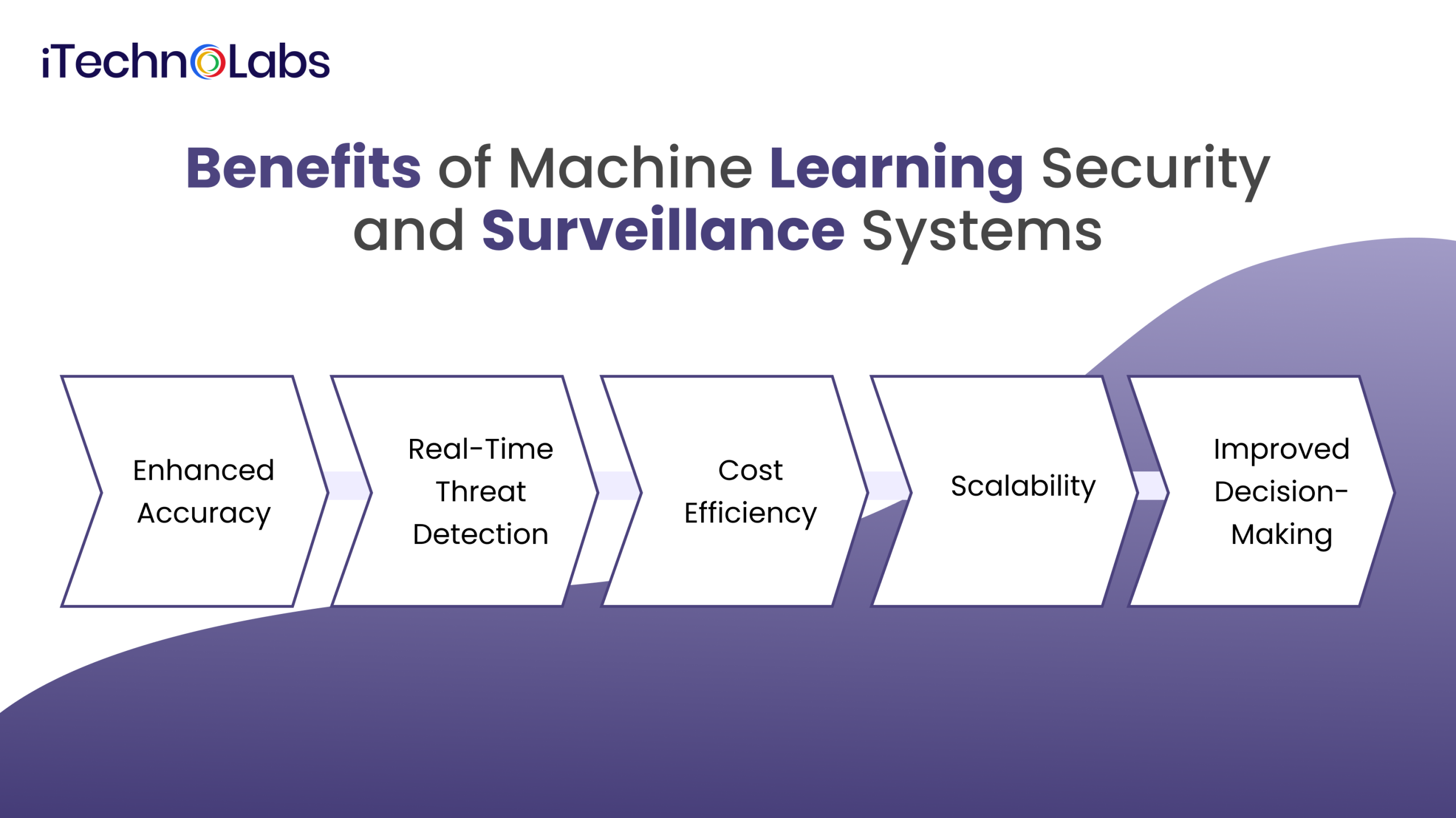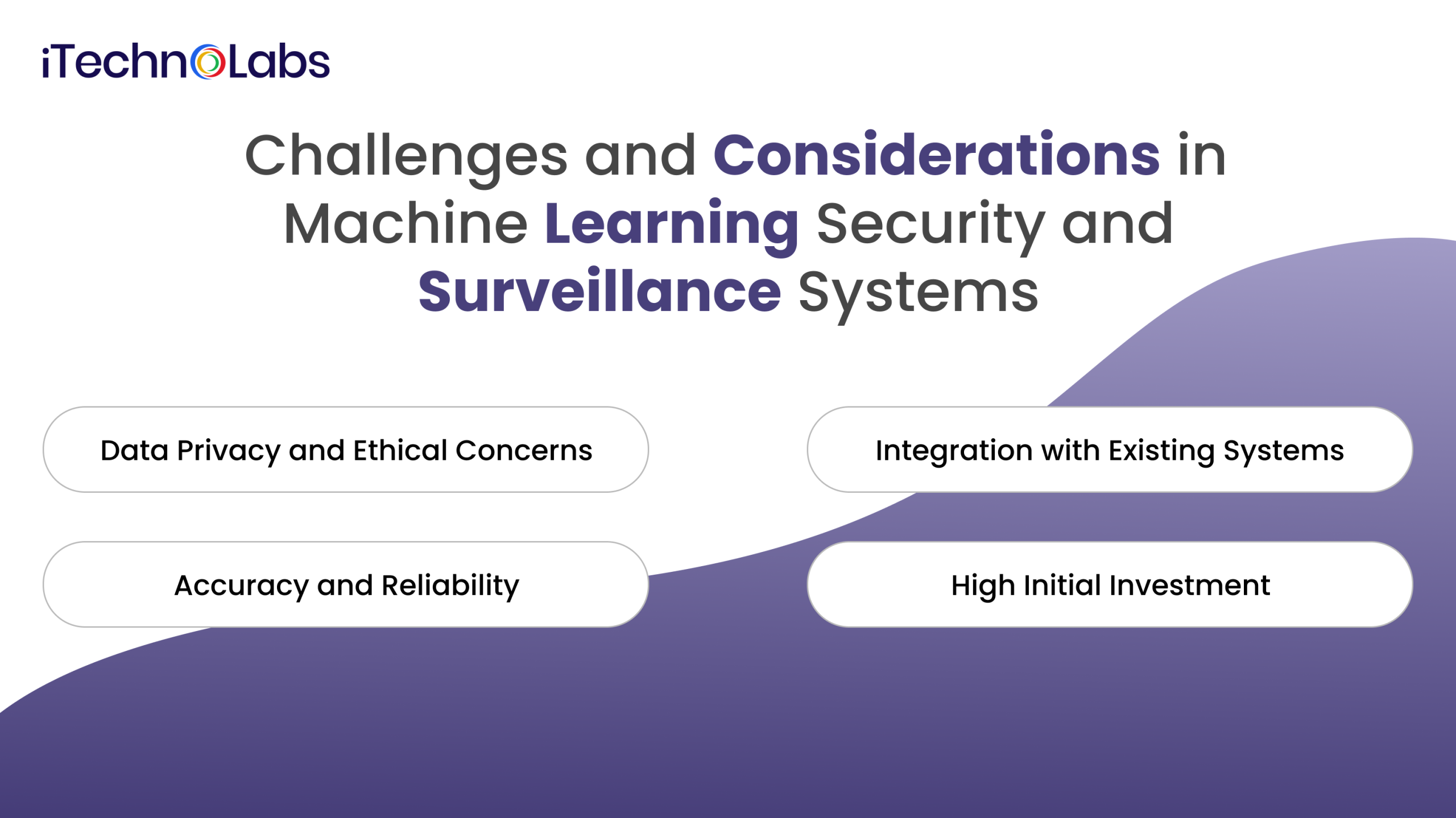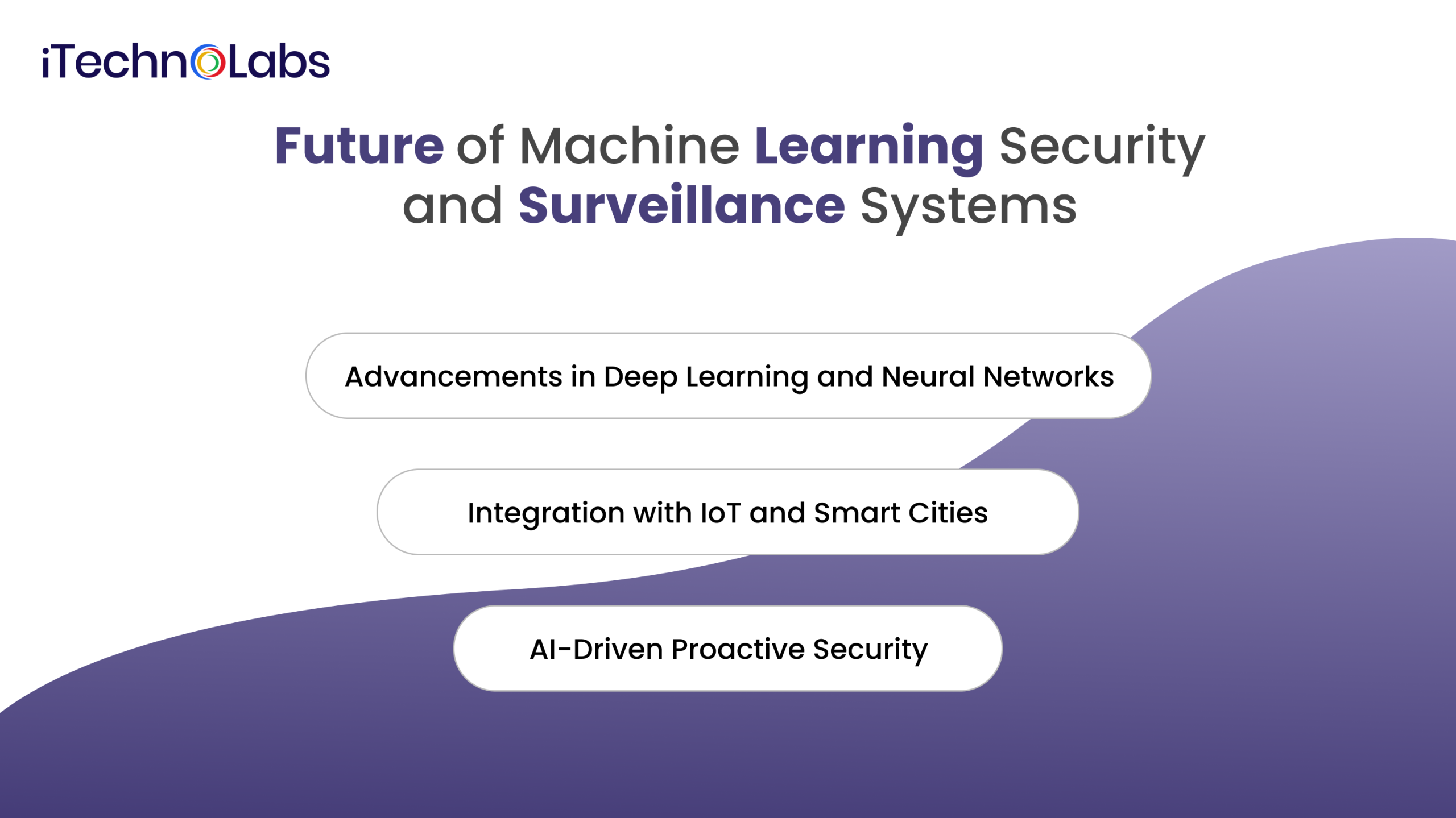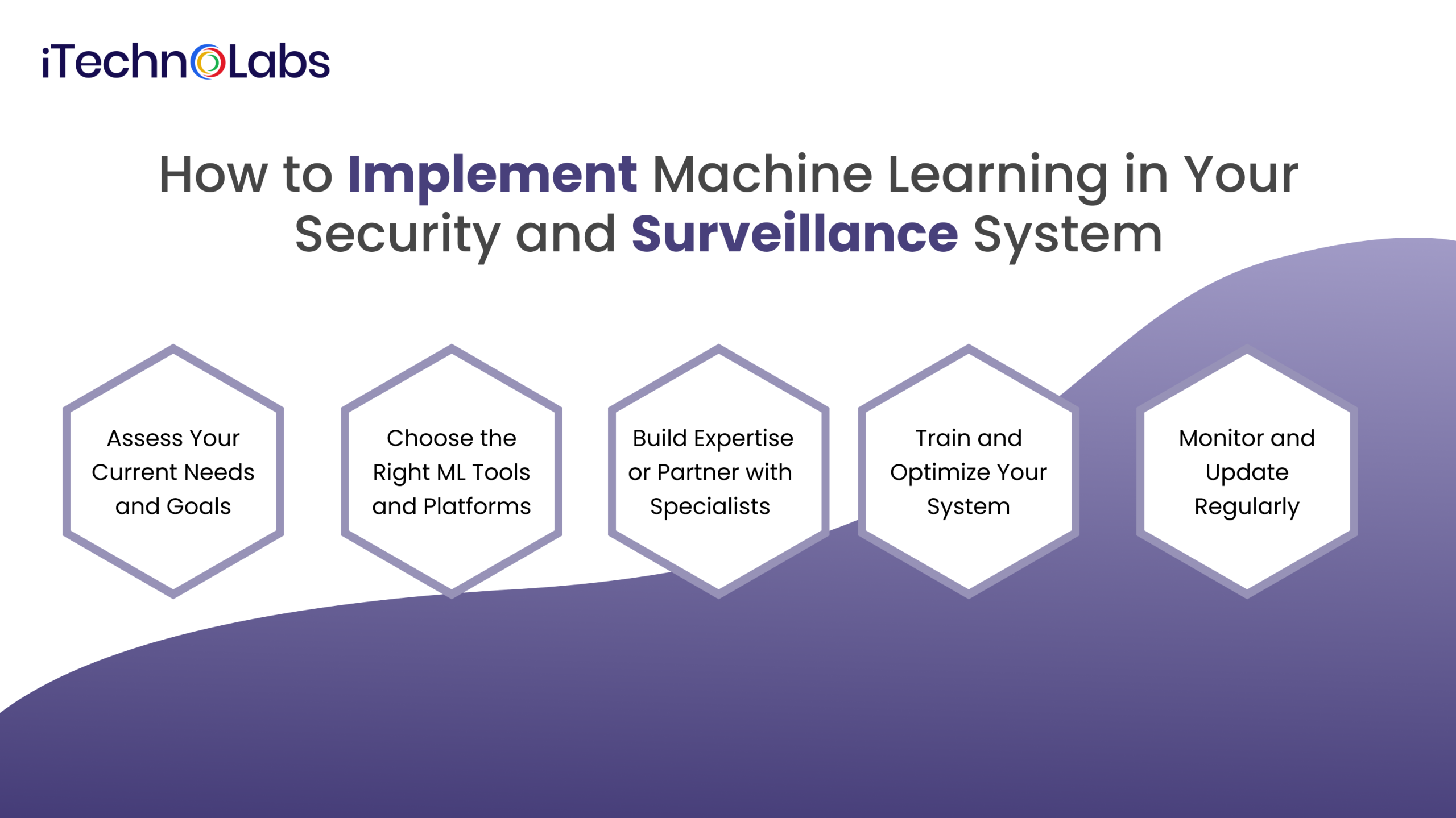The evolving contemporary world begs for advancing machine learning security and surveillance systems, as personal, public, and commercial life becomes even more vulnerable to increased risks and threats associated with growing urban populations, and further reliance on technology. While theft and vandalism are among the oldest threats that people are aware of, cyberattacks and terrorism, safeguarding valuable assets and maintaining safety are top priorities for governments, organizations, and individuals alike. Conventional security systems must operate without interruption, but they have significant limitations in proactively detecting threats or responding in real-time.
Then comes machine learning, one of the revolutionary technologies that is changing the face of the security and surveillance industry. Accelerating action from reactive solutions to intelligent and proactive surveillance systems, machine learning applications change the use of data from huge amounts of cameras, sensors, and other equipment into comparative angles in threat detection with higher speed and effectiveness than before.
Machine learning not only distinguishes itself from other technologies by acquiring and adapting to the current conditions but also guarantees that security systems will continue to be kept ahead of threats. By modifying itself to the changing environment instead of relying on pre-programmed rules or static instructions, machine learning algorithms also improve capacity for prediction.
Machine learning is more than just a new security trend; it represents the future of surveillance by establishing proactive, automated, and intelligent methods of observation. Machine learning security and surveillance systems will completely redefine protection in our world by being able to detect anomalies and recognize patterns while responding instantly. With this technology rapidly evolving, it could provide some of the most intelligent, secure, and efficient monitoring solutions available. Such solutions would be a direct response to today’s increasing demand for security.
As of 2024, the global AI in video surveillance market is projected to reach approximately USD 6.51 billion, with an anticipated compound annual growth rate (CAGR) of 28.1% from 2024 to 2030. This significant growth reflects the increasing adoption of AI-driven machine learning security and surveillance systems worldwide. While specific data on the number of countries utilizing AI-based surveillance systems is limited, the expanding market size indicates a broad and growing implementation of these technologies across various regions. Notably, countries like China and the United States continue to be major players in the AI surveillance market, contributing to the development and distribution of AI-based surveillance technologies globally. This widespread adoption underscores the critical role of AI in enhancing security and surveillance capabilities worldwide.
What is Machine Learning Security and Surveillance Systems?
Machine Learning (ML), is a subset of Artificial Intelligence (AI). It has revolutionized the operation of any surveillance system at present in this digital age. Unlike the traditional programming methods that rely entirely on explicit programming of instructions. With ML, systems learn from data and improve with time. It means better intelligence and more efficient decision-making, a complete game-changer for modern surveillance solutions.
Machine learning is all about programming algorithms with huge datasets, understanding their patterns, and predicting how things will move up in the future. ML has now become so useful in different applications for automating tasks like monitoring video feeds, checking suspicious behaviours, and alerting intrusion events into access control systems that normally consume at least several hours of manual labour. Organizations can then use ML to have more enhanced frameworks of security that are proactive rather than those created by humans.
How Machine Learning Works in Surveillance Systems
Machine learning security and surveillance systems derive their power through the process of analyzing and processing data from different sources including cameras, sensors, and IoT devices which can help in pulling their relevant information. Such systems are fed with advanced algorithm techniques such as neural networks and decision trees to reveal valuable insights from raw data. Here is how this is done:
- Data Collection: Video footage, audio signals, or environmental data is constantly being captured by surveillance devices.
- Data Processing: Based on this data, ML algorithms will use them to analyze the data in real-time, and will try to locate the key features, like facial characteristics, motion patterns or abnormal activities.
- Pattern Recognition: These systems can study historical data, and given baseline behaviours can then identify deviations, such as unauthorized access or suspicious movements.
- Anomaly Detection and Alerts: ML enables systems to flag anomalies instantly and send alerts to security personnel for further action.
- Continuous Learning: As the number of inputs increases, the system learns better, more quickly refining its understanding and becoming more accurate and efficient.
By making machine learning security and surveillance systems smarter, more rapid, and reliable. It does real-time threat detection and minimizes the incidence of false alarms in order to assure protection for establishments, cities, or individuals. Well adapted to speeding up the pace of ML adoption, the future of surveillance now lies inside.
Key Applications of Machine Learning Security and Surveillance Systems
Machine learning (ML) revolutionizes the field of security and surveillance, achieving new heights concerning automation, accuracy, and efficiency. Intelligent algorithms will enable machine learning to elevate traditional surveillance systems to become smarter as well as proactive. Here are some examples of high-reaching applications of machine learning security and surveillance systems realm:
Facial Recognition
Face recognition is the widely used application of ML for surveillance purposes. It consists of various algorithms which can identify people from video recordings using face features, even in difficult conditions. This model training is very large in amount because it is trained to find high-area matches against patterns and highly accurate face detection in databases.
Airport security also makes heavy use of facial recognition- for quick identification of passengers increasing security without long waiting times. Likewise, public spaces such as shopping malls, stadiums and government buildings use the technology for crowd monitoring and real-time identification of persons of interest.
Anomaly Detection
Machine learning is a technique that works well for recognizing specific unusual patterns or behaviours; hence, it can easily be touted as intelligent anomaly detection. These intelligent systems study video data streams to notice anomalies like unauthorized access, unusual movements, or an irregular number of people clustered together.
For example, in open locations like train stations or sports stadiums, identifying certain irregularities might assist in identifying unattended items or suspects. It will therefore enable security professionals to trigger these occurrences instantly in order to address and intervene proactively, rather than waiting for the potential hazard to arise.
Object Detection and Tracking
The real-time identification and tracking of objects—people, vehicles, or packages—by machine learning algorithms is possible via a surveillance system. Designed to monitor critical facilities and ensure the security of high-value areas, these systems are best utilized at entrances, parking lots, and monitoring critical infrastructure.
For instance, in industrial sites, object detection would be a safety monitoring aspect for vehicles and personnel entering or leaving the facility. In urban locations, managing traffic flow and violations would be possible through automatic object identification, contributing to intelligent city infrastructure.
Predictive Surveillance
For instance, predictive models can identify hotspots prone to criminal activities, enabling law enforcement to allocate resources more effectively. Additionally, in corporate environments, ML can detect insider threats by analyzing unusual access patterns or anomalies in employee behaviour.
In fact, predictive models can identify hotspots where criminal activities are likely to occur, thus enabling law enforcement agencies to deploy resources judiciously. Again, in corporate settings, ML may have data on insider threats by recognizing atypical access patterns or deviations in employee behavioural patterns.
Automated Video Analytics
With the increasing amount of video footage produced every day, it is now impossible to analyze it manually. ML-based automated video analytics solve this problem by processing and extracting actionable insights for thousands of petabytes of video data.
Automated video analytics offer improved response times by notifying security teams of critical events without human intervention. Generally, they are used to observe people’s behaviour, identify fraudulent activities in banks, and manage crowds in public places.
The functions of machine learning have brought revolution in the form of capabilities for surveillance and security, which seemed almost impossible. From real-time facial recognition to predictive analytics, ML makes organizations keep one step ahead of security threats. These applications continue to evolve to create safer environments while placing less work on the human operators.
Also, read: ERP Development Cost in Canada
Benefits of Machine Learning Security and Surveillance Systems
The integration of machine learning (ML) with security and surveillance systems offers transformative benefits, making these systems smarter, more efficient, and much more reliable. The systems also ease some of the most critical problems in modern infrastructure related to security by automating or augmenting traditional processes. Some of the key benefits include:
Enhanced Accuracy
Machine learning improves the efficacy of security systems far beyond what conventional methods can achieve, reducing both false positives and negatives. Unlike previous systems, which misidentified harmless actions as threats or failed to recognise real threats, ML systems learn to distinguish daily activities from actual security actions with high precision. For example, an ML-based surveillance system could distinguish between an individual entering a restricted area and an innocuous shadow, reducing false alarms and allowing for targeted action.
Real-Time Threat Detection
One of the factors that make an ML-enabled system stand out is its alertness to the occurrences of incidents in real time. To substantiate the need, the systems receive and continuously analyze input from the cameras and other sensors, scanners, and detectors of suspicious activities as they happen and then trigger an alert. A case in point is the shoplifting detection ML-enabled applications that flag suspicious events even in retail stores and immediately notify security personnel.
Cost Efficiency
Artificial intelligence machine learning reduces operational costs because it minimizes the need for regular manual supervision. It’s the automated maintenance of wide-ranging surveillance with less human resource management while completing vast amounts of vigilance. It supplements process efficiency and reduces factors determined by human beings. This is achieved through increased efficiency, ensuring a much better return on investments for the enterprise.
Scalability
While typical systems require combining staff as it increases, this system grows without requiring any additional manpower from the organization. Such organizations do not need to deploy additional manpower but fortress surveillance systems at different locations such as office branches within a city-wide infrastructure. This scalability of ML applications makes this technology even more applicable in large enterprises and smart city projects.
Improved Decision-Making
The data that boost the effect of decision-making and risk management are instilled with machine-learned insights from its data. Such complex machines analyse trends, patterns, and anomalies in order to help a security team identify vulnerabilities, predict potential threats, and implement actions that can improve safety and preparedness.
The benefits of machine learning security and surveillance systems extend far beyond automation, delivering enhanced accuracy, cost savings, and strategic insights that redefine modern security practices.
Challenges and Considerations in Machine Learning Security and Surveillance Systems
While machine learning (ML) has transformed security and surveillance systems, its implementation is not without challenges and considerations. Organizations must navigate these obstacles to ensure responsible and effective deployment.
Data Privacy and Ethical Concerns
One of the major problems lies in data privacy. Machine learning security and surveillance systems, especially those that use facial recognition functions, raise once more their ethical dilemmas of privacy invasion. As such, it would always be followed by a query on whether human beings are under unnecessary and unwanted monitoring. Such a context raises an issue of overreaching surveillance and the possible misuse of sensitive data. Another dimension of complication involves making data protection requirements such as the European GDPR or similar laws at a global level within compliance. Therefore, organizations need to keep transparent policies and enforce strong safeguards against such concerns to maintain trustworthiness among the public.
Accuracy and Reliability
Just how accurate an ML system can be according to the quality and diversity of input data. If the data is either biased or has flaws, this can produce wrong output from false positives to missed threats, compromising the security effort and confidence in the system. For example, a limited dataset may not train the perception surveillance system to recognize individuals from diverse demographics, creating both equity and reliability challenges. Regular improvements to datasets and updated algorithms are to be done to maintain actual performance and accuracy.
Integration with Existing Systems
Integrating machine learning into legacy surveillance infrastructures is a long, tedious, and expensive process. Most of the traditional setups are not meant to have the features of ML, so all systems or infrastructure will have to undergo replacements or require extensive upgrades. Compatibility issues, technical barriers, and disruptions during the transition can delay implementation and add costs. Successful integration requires meticulous planning, skilled personnel and ongoing support.
High Initial Investment
Implementing machine learning technology often requires substantial upfront investment in hardware, software, and training. Having high-quality cameras and advanced sensors along with cloud computing resources and skilled personnel to operate them can be quite expensive for organizations to maintain the system smoothly without overspending their budgets This could especially be a concern for medium businesses as they may struggle to see the tangible benefits that justify such investments.
Future of Machine Learning Security and Surveillance Systems
The potential for machine learning security and surveillance systems, looks promising with progress and exciting opportunities. As technology progresses further in the future ML is expected to have a role in protecting assets, ensuring safety and improving situational awareness.
Advancements in Deep Learning and Neural Networks
Video surveillance and threat detection are set to change with deep learning, a subset of ML. With enhanced processing power, neural networks with greatly improved processing power can analyze huge amounts of data, detect complicated patterns, and discover potential threats. Advanced capabilities, like emotion recognition, contextual awareness and nuanced behavioural analysis, will be present in future systems — which will further develop intelligence and adaptivity in surveillance.
Integration with IoT and Smart Cities
Imagine the integration of machine learning with the Internet of Things (IoT) and smart cities will give rise to an entirely new interconnected age of surveillance systems. Such a system would provide real-time holistic views of urban environments through smart sensors, cameras, and devices, which work together in harmony. Data will be analyzed upon these interconnected systems to monitor traffic and even detect any unusual activity as well as respond to incidents dynamically. Thus, the whole security scenario and urban management will get better.
AI-Driven Proactive Security
Another emerging trend is the shift from reactive security to proactive security. Surveillance powered by artificial intelligence will begin to be predictive and preventive rather than merely reactive. For example, it will analyze historical data and real-time feeds to identify high-risk areas, foresee criminal intent, and thus more effectively deploy resources.
Machine learning is set to drive unprecedented innovation in security and surveillance, blending cutting-edge technologies to create systems that are smarter, more proactive, and seamlessly integrated into our digital landscapes.
How to Implement Machine Learning in Your Security and Surveillance System
In terms of machine learning security and surveillance systems, adding machine learning enhances the possibility of improving their functionality considerably, yet it needs a methodical approach. Here is a way to proceed with the implementation of machine learning step-by-step:
Step 1: Assess Your Current Needs and Goals
- First, assess your current surveillance system, and recognize the issues or objectives that relate to it. Identify which components of security concerns will require improvements, such as facial recognition, anomaly detection, and real-time alerts with the aid of ML.
Step 2: Choose the Right ML Tools and Platforms
- Choose the most appropriate machine-learning tools and frameworks that fit your goals. From popular names like TensorFlow and OpenCV to tailored solutions, these options serve as great foundations for advanced analytics and automation.
Step 3: Build Expertise or Partner with Specialists
- To develop and make effective use of your machine learning systems, a partnership with a proven technology partner may prove beneficial as you engage in capacity building for in-house development. Well-skilled teams should support your efforts at integrating machine learning into your current infrastructure.
Step 4: Train and Optimize Your System
- Use real-life data to train your ML algorithms so that they end up really accurate and effective. The models should continuously be fine-tuned for specific use cases or use settings over time to allow for performance improvements.
Step 5: Monitor and Update Regularly
- Finally, build a system for monitoring the performance of the systems and for updating the ML models as new data comes or environments change. The updates must be regular, so that the systems remain valid and reliable, and keep addressing emerging challenges in security.
Important Article: Guide to Hiring a Great AI Engineer
Conclusion:
The machine learning security and surveillance systems are revolutionized through improved accuracies, speed of threat detection in real-time as well as actionable insights through relevant applications. From facial recognition to predictive surveillance, machine learning proves itself exceptional for various uses in contemporary security practices. Although data privacy, integration issues, and high initial costs pose some problems, improved systems outweigh such limitations. By using machine learning, organizations can develop systems that proactively scale and efficiently combat threats before considering them.
Adopting ML-powered surveillance systems makes it possible to carry out safety enforcement besides becoming a competitive advantage in an increasingly frantic pace in the digital world. These technologies are no longer a luxury but a complement to reality for companies serious about offering strong, future-ready security solutions.
FAQ’s
1. How is machine learning used in security?
Machine learning improves security through enriched data analysis across cameras, sensors, and other devices from which it detects patterns, identifies threats, and forecasts risks. It powers facial recognition, anomaly detection, and alerts in real-time, thus rendering security systems more efficient and accurate as well as proactive in preventing and responding to incidents.
2. How is AI used for security and surveillance?
With the help of an algorithm monitoring and assessing massive amounts of data in real-time, it automates processes like video analysis, face recognition, and identification of misbehaviours. It not only provides insight and automates alerts but also helps in predictive analysis to avert security threats before they happen.
3. What is SOC in machine learning?
In terms of machine learning, SOC or Security Operations Centre is a centralized space where artificial intelligence and machine learning technologies are involved in the monitoring, analysis, and response to security incidents. Such centres in machine learning do real-time threat detection, anomaly tracking, and automated response, creating a protective system for the organization’s infrastructure.
4. What is the difference between a security system and a surveillance system?
A security system is primarily concerned with preventing unauthorized access or threats through the use of alarms, locks, and detection mechanisms. Surveillance systems, on the other hand, ensure continuous monitoring to detect and log potential incidents, usually through cameras and other sensors. The two will be effectively applied in an integrated system using machine learning approaches for improved threat detection and prevention.


